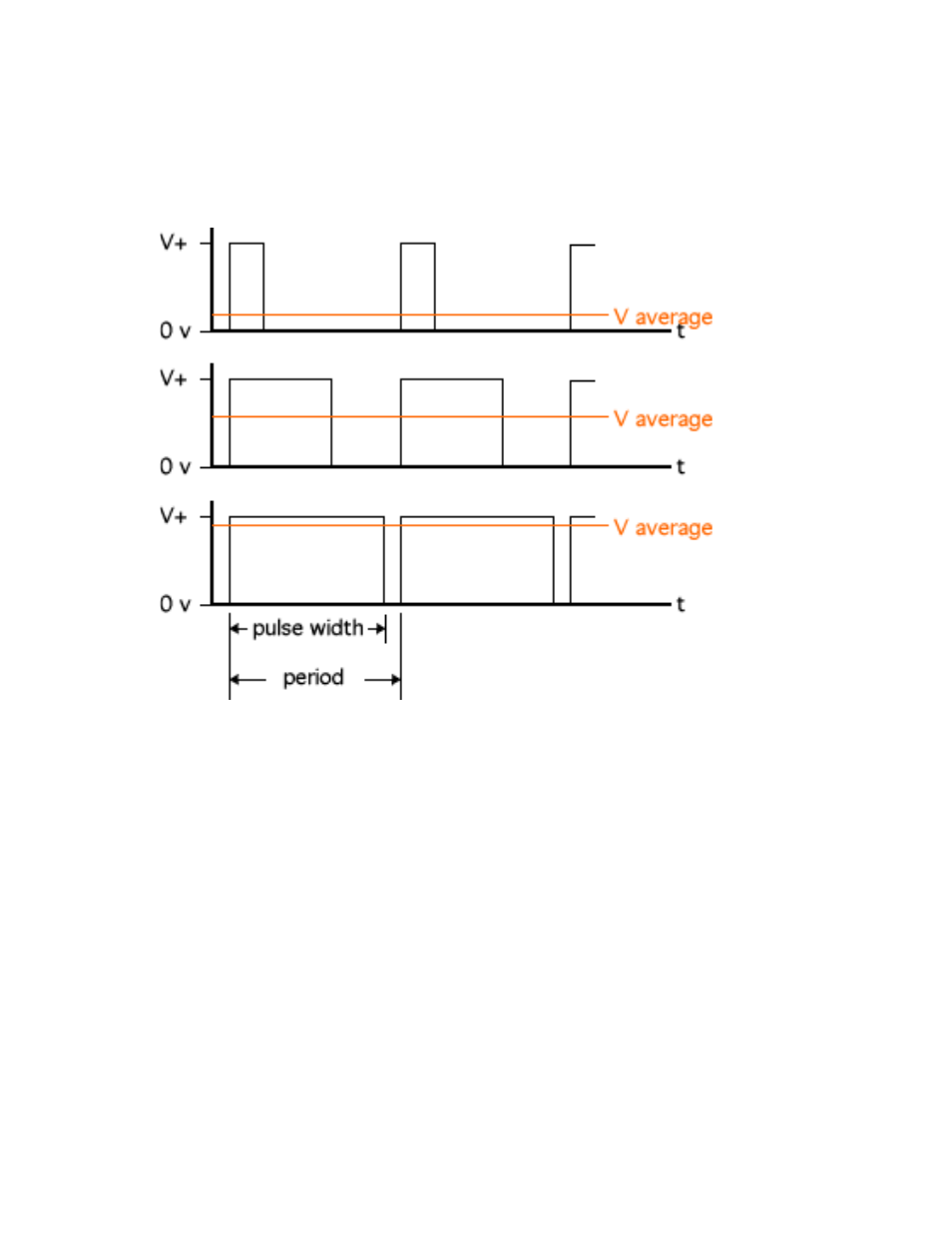TE Technology TC-720 User Manual
Page 9

PULSE-WIDTH MODULATED POWER OUTPUT WITH SOFT START
The TC-720 regulates the output power to the TE device using a method called pulse-width modulation (PWM). With PWM,
power to the TE device is switched quickly on and off at a constant frequency. This creates a square wave pulse of power
with a constant time period. The on time, or pulse width, can be varied to create an average output voltage (Vaverage) that
is required by the TE device to maintain the set temperature.
The important advantage to PWM control is that it does not cause the extreme temperature excursions that are
experienced with a thermostatic control system. This helps to extend the life and reliability of the TE device. At the same
time, PWM control does not generate a large amount of waste heat as compared with most linear control systems, so large
heat sinks are not required with the PWM temperature controller. The controller features a soft-start function that slowly
increases the output when enabled to prevent current surges or spikes at start up.
By choosing the appropriate power supply(s), the controller can control loads from 0 to ≤36 V DC at up to 20 A via pulse-
width modulation with the onboard power transistors arranged in an H-bridge. This enables bipolar control for
automatically adjusting the output voltage for heating or cooling.
LINEAR CONTROL OUTPUT
A potential disadvantage to PWM control is the generation of electromagnetic noise, particularly in high current
applications. In such cases, the TC-720 can be configured as part of a linear control system to provide (1) a proportional
analog output signal, and (2) a means of reversing the polarity of a drive voltage generated by an external power supply.
The analog signal cannot be used for powering TE devices directly, but it can be used with a programmable, linear-output
power supply. In this mode the analog output from the TC-720 controls the load-level output voltage of the linear power
supply. That linear output voltage can be fed back into the TC-720 where its electronic circuitry (H-bridge) is used to control
the polarity of the voltage which is then supplied to the TE device. This provides true bipolar, linear control.
9
